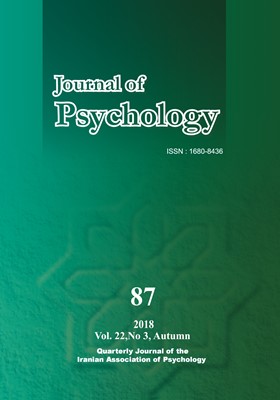The Relationship between Perception of Parental Styles and Resilience: The Mediating Role of Human Agency
Subject Areas : Psychology
Mamak Mahdavi Mazdeh
1
,
Elahe Hejazi
2
![]() ,
Zahra Naghsh
3
,
Zahra Naghsh
3
1 - Faculty of Psychology and Education, University of Tehran, I. R. Iran.
2 - Faculty of Psychology and Education, University of Tehran, I. R. Iran.
3 - Faculty of Psychology and Education, University of Tehran, I. R. Iran.
Keywords: human agency, resilience, perception of parental styles, psychological basic needs,
Abstract :
The purpose of this study was to identify the role of human agency in the relationship between perception of parental styles and resilience among adolescents. To fulfill the stated goal, 516 high school students (273 female, 243, male) were selected by means of cluster and multi stage sampling. The following measures were given to them to complete a survey consisted of Assessment Human Agency Scale, Perception of Parenting Styles Questionnaire and Resilience Scale. The results of structural equation modeling showed that human agency mediated the relation between perception of parental style and resilience .Human agency with parental style perceived are predicted 63% of variance of resilience. Perception of paternal style and maternal style are predicted the 37% and 31% of variability of human agency. In general, when there was a consistency between mother and father parental style and this style is based on satisfaction of psychological basic needs, adolescence' human agency and resilience raised and increased.


